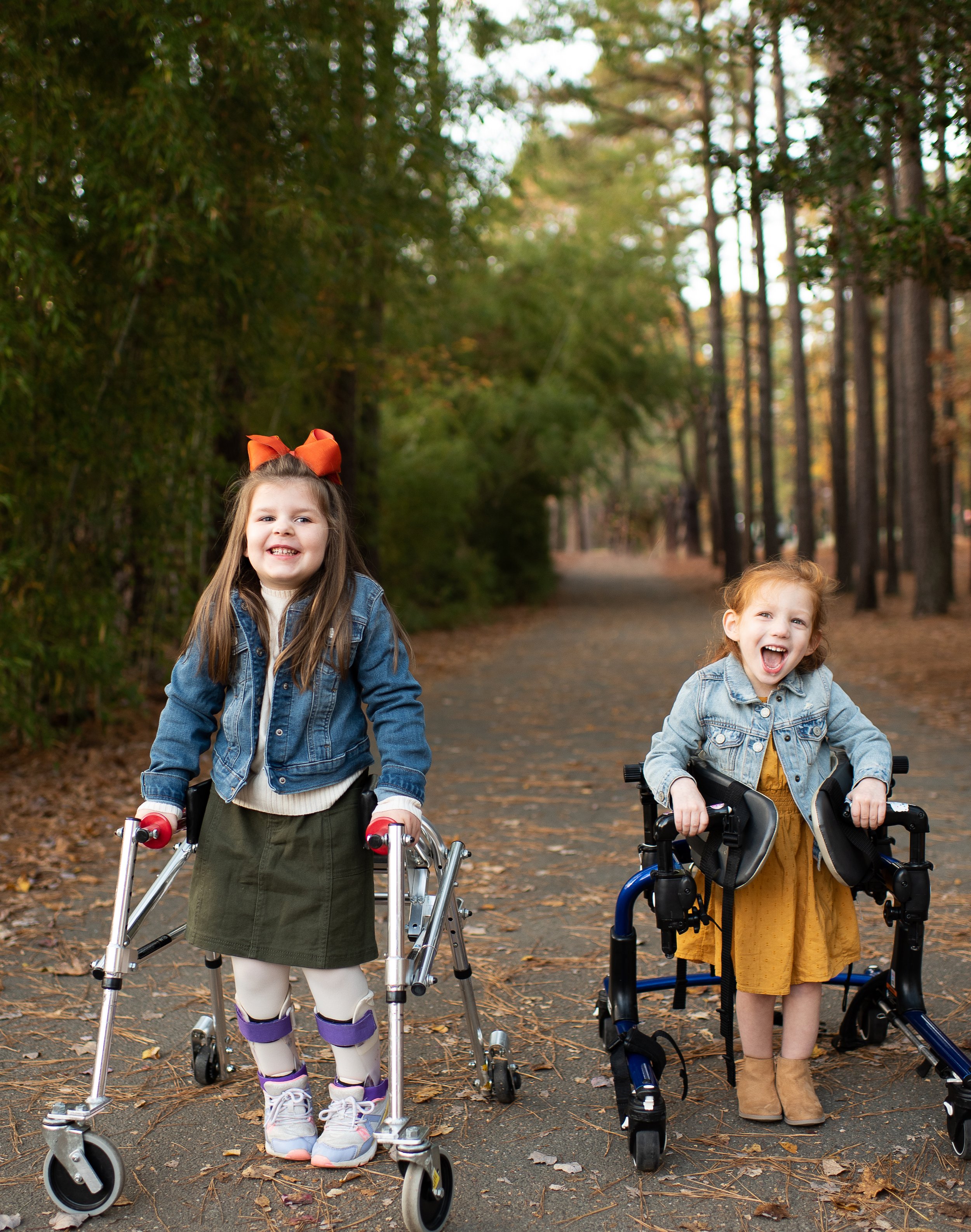
Resources
How Can You Help?
-

DONATE
Make a meaningful impact by contributing directly to our campaign! Don’t forget to check if your employer offers matching donations—your gift could go even further.
Consider setting up a Facebook fundraiser for your birthday, the holiday season, or simply to spread kindness.
If you’re active on Instagram, it’s easy to make a difference! Create a post, select "Add Fundraiser," choose The Lilly and Blair Foundation, fill in the details, and then share it with your followers.
Every contribution counts and 100% of donations will go to research that supports finding a treatment or cure for childhood-onset, de novo SPG4. -

SHARE
Stay connected with us on social media @lillyandblair. Share our mission and stories with your friends and family to help raise awareness.
Download our informative one-pager and distribute it to your loved ones and community.
Together, we can spread the word and inspire others to join our cause. -
PARTICIPATE
Get involved by joining us at our upcoming events or consider hosting your own. Your participation makes a difference.
Mark Your Calendar:
3rd Annual Golf Tournament and Dinner
Friday, May 30, 2025 | Clifton, VARun, Roll, Stroll + Play! 5K
Stay tuned for the fall 2025 date announcement!Thank you for joining us as we create unforgettable experiences that support our mission.
Ongoing Studies
-
Spastic Paraplegia - Centers of Excellence Research Network (SP-CERN)
Researchers in the U.S. focused on Hereditary Spastic Paraplegia (HSP) and Primary Lateral Sclerosis (PLS) have launched SP-CERN, comprising ten centers.
This network unites top physician-scientists and their teams to develop a registry, biobank, and genomic archive.
SP-CERN's goal is to advance translational research, enhance clinical trial readiness, and support therapy development for HSP and PLS.
By collaborating with global consortia, SP-CERN aims to improve healthcare access and the quality of life for individuals with these conditions.
LEARN MORE >> -
Registry and Natural History Study for Early Onset Hereditary Spastic Paraplegia
The Registry and Natural History Study for Early Onset Hereditary Spastic Paraplegia (HSP) aims to collect long-term clinical data and biological samples (including skin, blood, and saliva) from individuals under 30 who show early symptoms of HSP. Participants must have a clinical diagnosis of hereditary spastic paraplegia, exhibit variants in HSP-related genes, or be a relative of someone with this diagnosis. While current treatments mainly address symptoms and improve quality of life, they do not significantly slow disease progression.
The goal is to use this registry to enhance understanding of the causes, progression, diagnosis, and treatment of HSP.
LEARN MORE >> -
Hereditary Spastic Paraplegia Genomic Sequencing Initiative (HSPseq)
The HSP Sequencing Initiative aims to deepen our understanding of the genetic underpinnings of hereditary spastic paraplegia (HSP) and similar disorders. HSP encompasses over 80 inherited neurological conditions characterized by progressive spasticity, making them a leading cause of inherited spasticity and related disabilities, with an estimated prevalence of 2-5 cases per 100,000 individuals globally.
In cases of childhood-onset HSP, initial symptoms can be vague, often delaying diagnosis until more severe symptoms appear. Currently, genetic testing for spastic paraplegia in children is not routinely performed. This study seeks to identify genetic factors associated with HSP, with the goal of developing more effective treatments tailored to specific genetic causes.
LEARN MORE >>
Literature and Reports
-
Early-Onset and Severe Complex Hereditary Spastic Paraplegia Caused by De Novo Variants in SPAST
This study aimed to explore the genotypic and phenotypic variations in children with de novo hereditary spastic paraplegia caused by SPAST (HSP-SPAST). Clinical and molecular data was analyzed from 40 patients aged 2.2 to 27.7 years who had heterozygous pathogenic SPAST variants, including 19 unique mutations, with 16 patients sharing a recurrent variant (p.Arg499His). These patients typically exhibited symptom onset in early childhood (median: 11 months) and experienced significant motor and speech delays. The condition progressed with ascending spasticity, dystonia, neurogenic bladder issues, gastrointestinal problems, and epilepsy. The findings reveal that de novo SPAST variants result in a severe and complex form of HSP, distinct from the classic familial HSP-SPAST, highlighting the need for clinicians to consider this syndrome in differential diagnoses for cerebral palsy.
READ MORE >> -
Hereditary Spastic Paraplegia Childhood Onset Survey
This survey, established and maintained by two moms of children with complex forms of Hereditary Spastic Paraplegia, is available for parents of children with HSP and adults whose symptoms began before age 18. The goals of the survey are to create an informal register of childhood-onset HSP cases; explore the prevalence of duplicate variants; connect families with similar symptoms, diagnoses and variants; connect families with leading researchers; and contribute to research.
COMPLETE THE SURVEY >>
VIEW THE 2022 REPORT >>

Together We Can
Time is not on our side, but we hope you will be.

